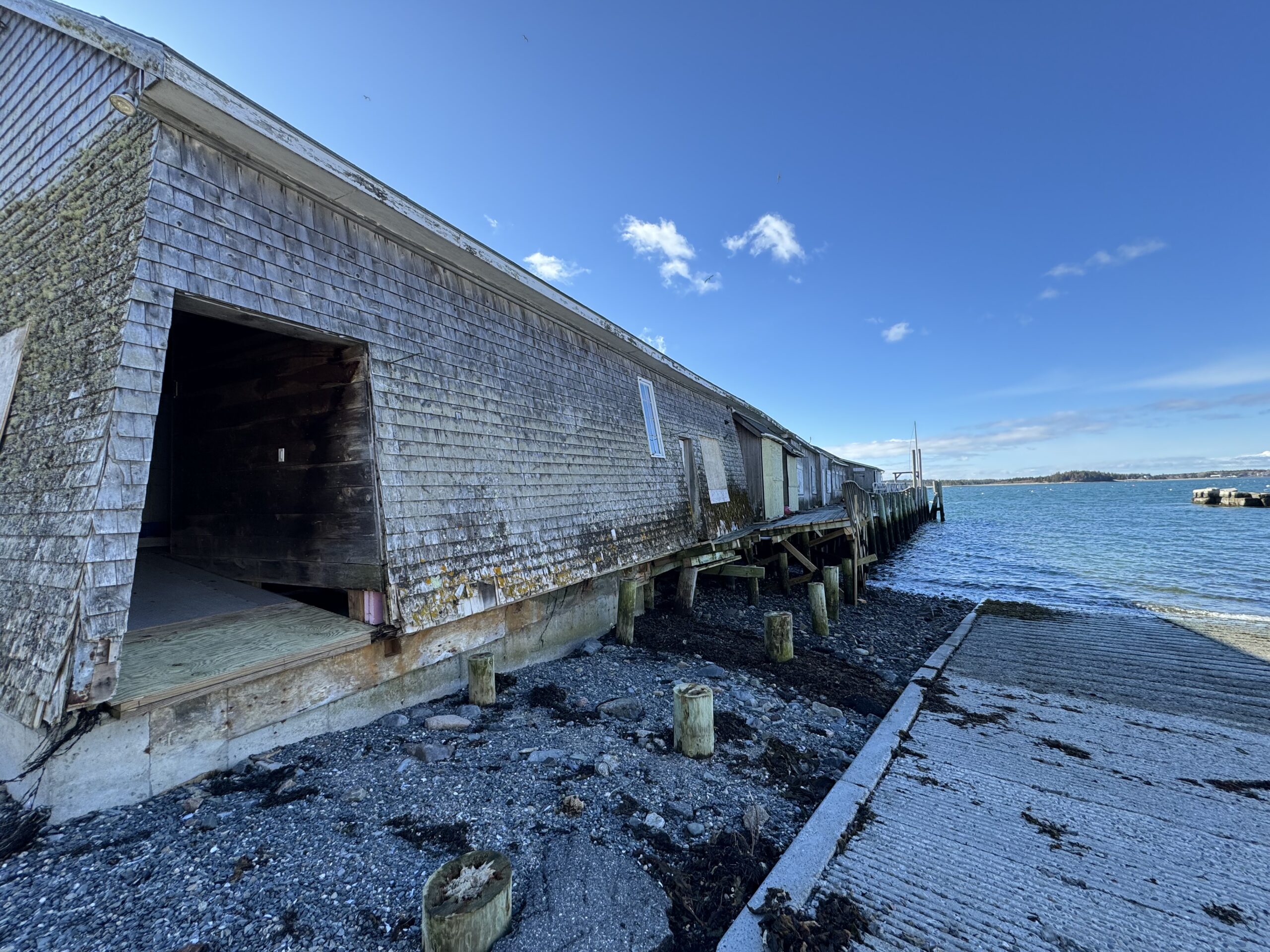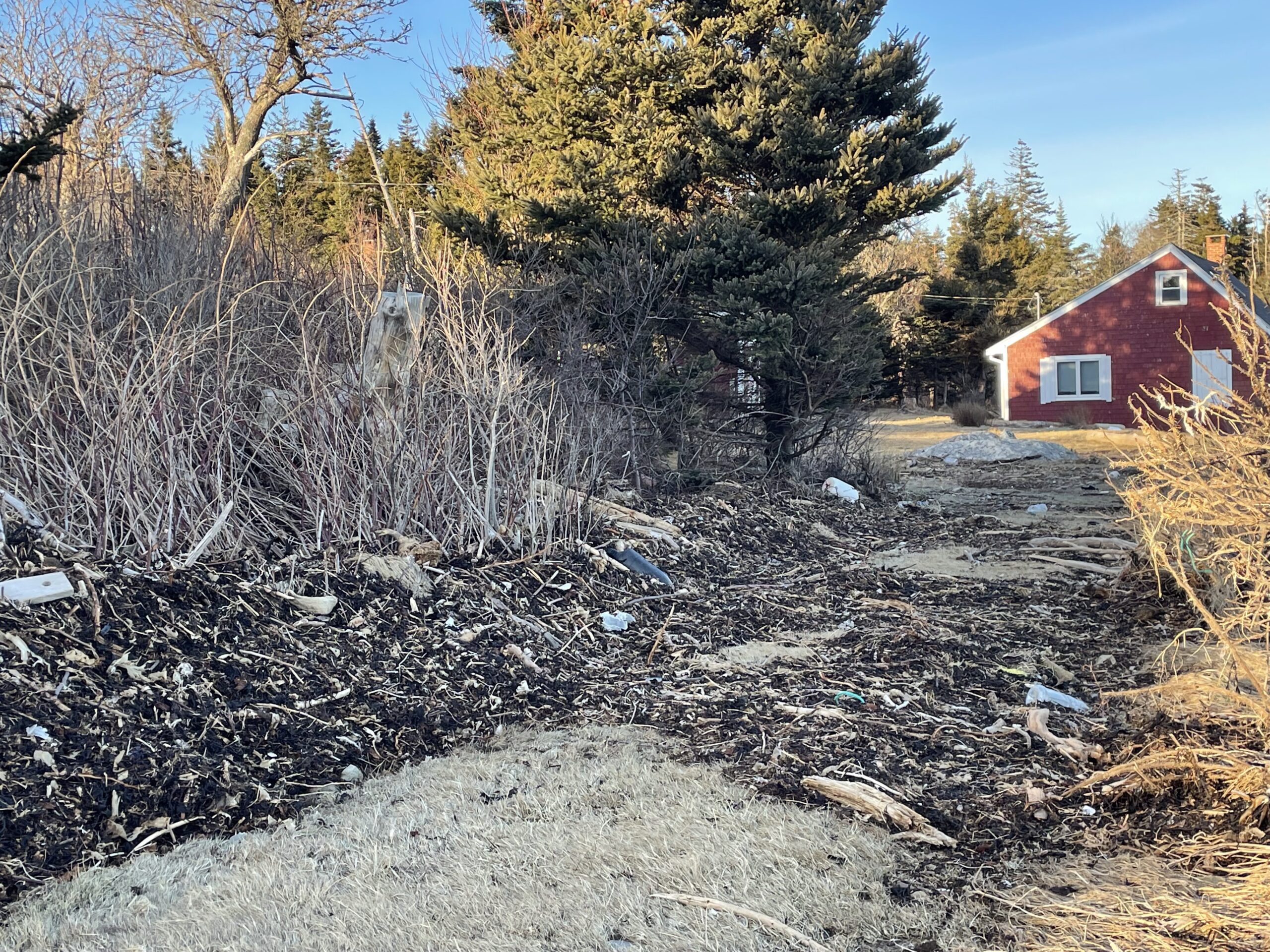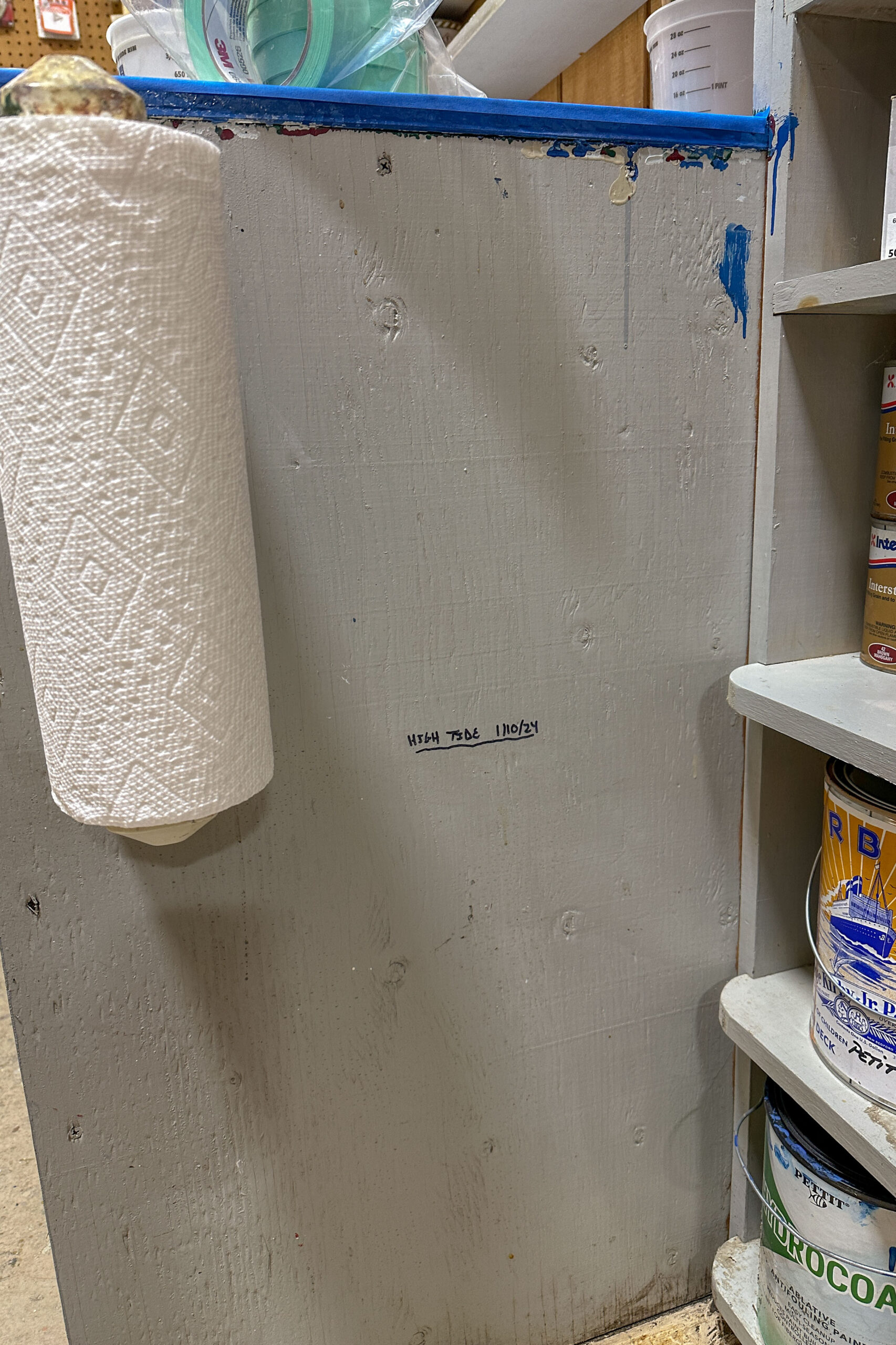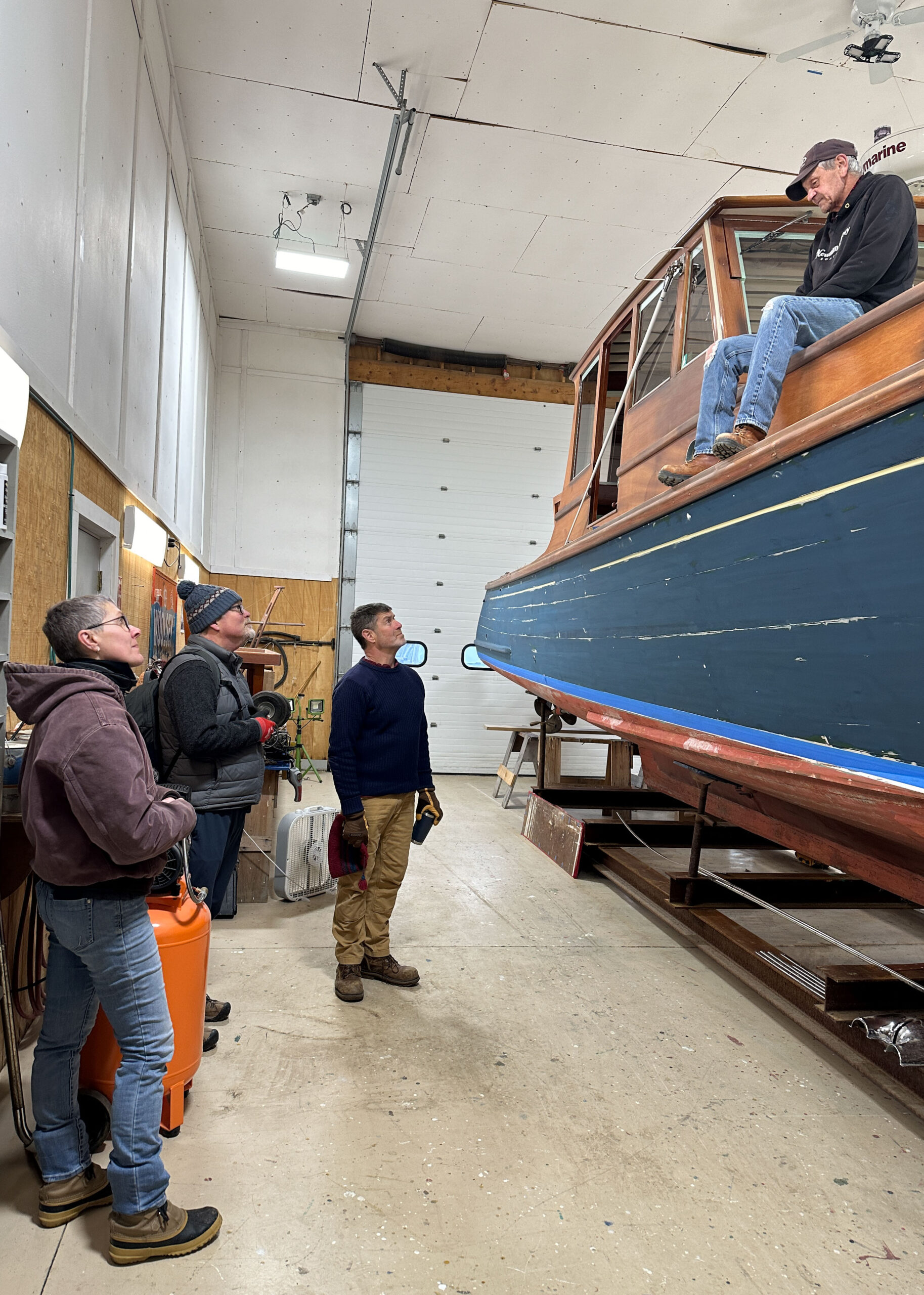
Residents of Maine’s outer, unbridged islands are used to the ebb and flow of the tides, and the constantly changing landscape of their island. Josh Gray, co-owner of Newman & Gray Boatyard on Great Cranberry, points to a poignant example on his island: Edgar’s Tractor. The tractor got stuck in the sand in 1950, and when Edgar Bunker left to fight in the Korean War, it stayed there awaiting his return. When he was killed during battle, it became a memorial, and over the years, the ocean crept up, getting closer to the tractor as it slowly rusts and sinks into the sand. This kind of erosion has happened over decades, but the storms that hit in January of 2024 brought new challenges that most islanders had never foreseen. During these storms, the coasts were pummeled with the ocean breaching seawalls, washing away wharfs, and landmarks.
Your gift to the Maine Seacoast Mission makes you part of all we do.
On Matinicus, the storm surge pushed rocks and debris up onto people’s beachfront properties and pathways were washed away, but the biggest impact was to the Centennial, a building that was right on the harbor. Built in 1876 and a fixture of the island, the building was not salvageable after the storm and the owner had to tear it down, leaving the harbor forever changed.
The state-owned wharf, where the island’s ferry docks, has also sustained damage but with other wharfs around the state also needing repairs, the community is not sure when their wharf will be fixed according to resident Laurie Webber. She also explains, “There are some cottages whose owners are sadly needing to make the choice of building a new place or trying to move their beloved place further back. Both would cost a lot, as doing anything on Matinicus costs more than on the mainland due to getting building materials and workers out there.”

On Isle au Haut, most of the large-scale damage seen on other islands was not as evident because most of the infrastructure is in a protected cove, according to island resident John DeWitt, a retired fisherman. While a few wharfs sustained damage, and one house flooded, the majority of the visible damage happened when a shed on one of the properties floated out into the cove and broke up. John explains that “It was surreal to watch, but there was minimal impact. When the shed broke up it had junk in it, so it looked terrible but was not all that bad.”
But on Great Cranberry, the storm did more damage to businesses and wharfs around the island. Gray is a second-generation boat builder on the island, and the storms in January breached the yard’s seawall and brought two feet of water surging into all of their buildings within ten minutes. “The storm surge buckled the large garage doors and inside the buildings there were inches of mud. The salt water ruined tools and fiberglass,” he explains. After the first flood, he was able to move his vehicles to higher ground, but there was only so much they could do to prevent more damage during the second flood a few days later, and another similar flood in March. It took the boatyard a week to just clean up after the back-to-back storms, and almost a year to fully recover. They raised their dock and started storing tools and materials up on platforms, but Gray realizes that if another big storm comes it might not be enough. “I had seen all the sea rise maps, but it did not really hit me until the storm, that all these places one day will be gone. It is hard to come to terms with the impermanence of it all.” He points to other damage on the island which saw roads, docks, and outbuildings that washed away. “It hit the community hard, you know everyone on the island and are intimately involved in such a tiny place.”


Luckily, while storms have still happened, the large-scale destruction seen last year has not happened again. Webber on Matinicus explains that storms are becoming bigger each year, and while the island will come together to continue to weather the storms, but there is only so much they can do. “The community realizes we need to make some changes that in my lifetime on the island we never had to be concerned about. We are resilient and will do what we need to in order to be on the island. The community will adjust. The difficult part is that insurance companies turn us down for coverage.” She adds, “How can we be prepared for that? When something happens, we deal with it the best we can. And then hope for the best. We love it, so we will make it work.”
To learn about the programs that serve the islands, please visit explore Island Outreach and Island Health. If you would like to volunteer with the Mission, please visit our Volunteer page.
